Copper response regulator1-dependent and -independent responses of the Chlamydomonas reinhardtii transcriptome to dark anoxia
- PMID: 24014546
- PMCID: PMC3809527
- DOI: 10.1105/tpc.113.115741
Copper response regulator1-dependent and -independent responses of the Chlamydomonas reinhardtii transcriptome to dark anoxia
Abstract
Anaerobiosis is a stress condition for aerobic organisms and requires extensive acclimation responses. We used RNA-Seq for a whole-genome view of the acclimation of Chlamydomonas reinhardtii to anoxic conditions imposed simultaneously with transfer to the dark. Nearly 1.4 × 10(3) genes were affected by hypoxia. Comparing transcript profiles from early (hypoxic) with those from late (anoxic) time points indicated that cells activate oxidative energy generation pathways before employing fermentation. Probable substrates include amino acids and fatty acids (FAs). Lipid profiling of the C. reinhardtii cells revealed that they degraded FAs but also accumulated triacylglycerols (TAGs). In contrast with N-deprived cells, the TAGs in hypoxic cells were enriched in desaturated FAs, suggesting a distinct pathway for TAG accumulation. To distinguish transcriptional responses dependent on copper response regulator1 (CRR1), which is also involved in hypoxic gene regulation, we compared the transcriptomes of crr1 mutants and complemented strains. In crr1 mutants, ~40 genes were aberrantly regulated, reaffirming the importance of CRR1 for the hypoxic response, but indicating also the contribution of additional signaling strategies to account for the remaining differentially regulated transcripts. Based on transcript patterns and previous results, we conclude that nitric oxide-dependent signaling cascades operate in anoxic C. reinhardtii cells.
Figures
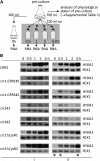


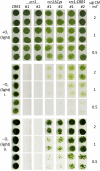
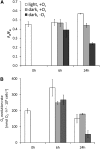
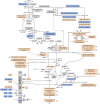
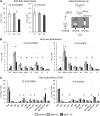


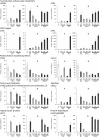

Similar articles
-
Ni induces the CRR1-dependent regulon revealing overlap and distinction between hypoxia and Cu deficiency responses in Chlamydomonas reinhardtii.Metallomics. 2016 Jul 13;8(7):679-91. doi: 10.1039/c6mt00063k. Metallomics. 2016. PMID: 27172123 Free PMC article.
-
Anaerobic expression of the ferredoxin-encoding FDX5 gene of Chlamydomonas reinhardtii is regulated by the Crr1 transcription factor.Eukaryot Cell. 2010 Nov;9(11):1747-54. doi: 10.1128/EC.00127-10. Epub 2010 Sep 10. Eukaryot Cell. 2010. PMID: 20833896 Free PMC article.
-
Photo-bleaching of Chlamydomonas reinhardtii after dark-anoxic incubation.Plant Signal Behav. 2013 Nov;8(11):e27263. doi: 10.4161/psb.27263. Epub 2013 Dec 3. Plant Signal Behav. 2013. PMID: 24300667 Free PMC article.
-
Algae after dark: mechanisms to cope with anoxic/hypoxic conditions.Plant J. 2015 May;82(3):481-503. doi: 10.1111/tpj.12823. Plant J. 2015. PMID: 25752440 Review.
-
From economy to luxury: Copper homeostasis in Chlamydomonas and other algae.Biochim Biophys Acta Mol Cell Res. 2020 Nov;1867(11):118822. doi: 10.1016/j.bbamcr.2020.118822. Epub 2020 Aug 13. Biochim Biophys Acta Mol Cell Res. 2020. PMID: 32800924 Free PMC article. Review.
Cited by
-
Photophysiological and transcriptomic response to the broad-spectrum herbicides atrazine and glyphosate in a photosynthetic picoeukaryote.Microb Genom. 2025 Jun;11(6):001402. doi: 10.1099/mgen.0.001402. Microb Genom. 2025. PMID: 40560168 Free PMC article.
-
Multiomics resolution of molecular events during a day in the life of Chlamydomonas.Proc Natl Acad Sci U S A. 2019 Feb 5;116(6):2374-2383. doi: 10.1073/pnas.1815238116. Epub 2019 Jan 18. Proc Natl Acad Sci U S A. 2019. PMID: 30659148 Free PMC article.
-
Evolutionary and genomic analysis of the caleosin/peroxygenase (CLO/PXG) gene/protein families in the Viridiplantae.PLoS One. 2018 May 17;13(5):e0196669. doi: 10.1371/journal.pone.0196669. eCollection 2018. PLoS One. 2018. PMID: 29771926 Free PMC article.
-
Genetically Programmed Changes in Photosynthetic Cofactor Metabolism in Copper-deficient Chlamydomonas.J Biol Chem. 2016 Sep 2;291(36):19118-31. doi: 10.1074/jbc.M116.717413. Epub 2016 Jul 20. J Biol Chem. 2016. PMID: 27440043 Free PMC article.
-
Ni induces the CRR1-dependent regulon revealing overlap and distinction between hypoxia and Cu deficiency responses in Chlamydomonas reinhardtii.Metallomics. 2016 Jul 13;8(7):679-91. doi: 10.1039/c6mt00063k. Metallomics. 2016. PMID: 27172123 Free PMC article.
References
-
- Adams S., Maple J., Møller S.G. (2008). Functional conservation of the MIN plastid division homologues of Chlamydomonas reinhardtii. Planta 227: 1199–1211 - PubMed
-
- Allen M.D., Kropat J., Merchant S.S. (2008). Regulation and localization of isoforms of the aerobic oxidative cyclase in Chlamydomonas reinhardtii. Photochem. Photobiol. 84: 1336–1342 - PubMed
-
- Almeida C.C., Romão C.V., Lindley P.F., Teixeira M., Saraiva L.M. (2006). The role of the hybrid cluster protein in oxidative stress defense. J. Biol. Chem. 281: 32445–32450 - PubMed
-
- Anbar A.D. (2008). Oceans. Elements and evolution. Science 322: 1481–1483 - PubMed
Publication types
MeSH terms
Substances
Grants and funding
LinkOut - more resources
Full Text Sources
Other Literature Sources
Molecular Biology Databases
Research Materials
Miscellaneous

